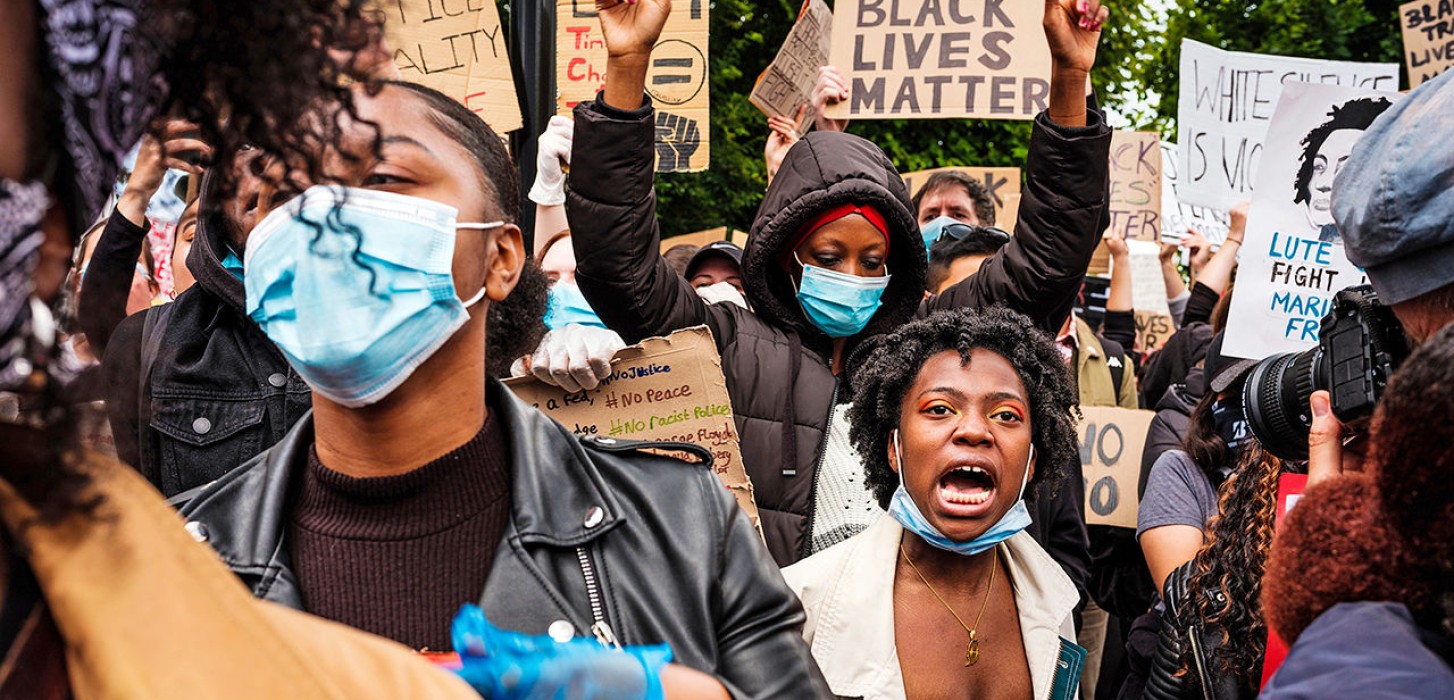The Impact of Black Lives Matter – How the Movement is Shaping Society Today

The Black Lives Matter (BLM) movement has grown from a hashtag into a global call for justice, equity, and systemic change. Originating in 2013 after the acquittal of George Zimmerman in the shooting death of Trayvon Martin, BLM has since become a powerful force advocating against racial injustice and police brutality. In this article, we’ll explore how BLM is influencing various aspects of society, from law and politics to education and popular culture.
The Origins and Growth of Black Lives Matter
A Movement Born from Tragedy
Black Lives Matter was founded by three Black women: Patrisse Cullors, Alicia Garza, and Opal Tometi. Initially, the movement centered around addressing the disproportionate violence faced by Black people at the hands of law enforcement. The slogan “Black Lives Matter” quickly gained traction on social media and in grassroots protests, becoming a rallying cry against racial injustice worldwide.
BLM’s Influence on Society Today
Political and Legal Reforms
One of the most significant impacts of Black Lives Matter has been its ability to spark political and legal reforms. Many jurisdictions across the United States have implemented police reforms, such as banning chokeholds, increasing transparency through body cameras, and revising use-of-force policies. BLM’s persistent advocacy has led to the establishment of civilian oversight boards and has brought attention to the need for criminal justice reform at the federal, state, and local levels.
In 2020, BLM’s influence reached new heights following the deaths of George Floyd, Breonna Taylor, and Ahmaud Arbery. These tragedies led to widespread protests that compelled governments worldwide to reassess their policies on policing and racial inequality. Countries including the UK, Canada, and Australia have initiated inquiries into systemic racism within their institutions, largely driven by the global resonance of the BLM movement.
Cultural Shifts and Increased Awareness
BLM has catalyzed significant cultural changes, particularly in how issues of race and representation are addressed. Conversations about racial inequality have entered mainstream media, education, and corporate environments. Many organizations have pledged to increase diversity in leadership and to actively combat workplace discrimination.
High-profile cultural institutions, including museums, film studios, and publishing houses, are now re-examining how they present narratives about race. The movement has also amplified Black voices in literature, music, and film, creating space for more authentic and diverse storytelling.
Black Lives Matter and Education
Rethinking Curricula
The BLM movement has also had a profound effect on education systems, encouraging schools to re-evaluate how Black history is taught. There is a growing push for curricula that include a broader, more inclusive view of history, emphasizing contributions from Black individuals and communities. This includes recognizing systemic racism and its ongoing impact on society.
For example, initiatives to incorporate Black history throughout the academic year, rather than just during Black History Month, have gained traction. Educators are increasingly using resources that highlight movements like BLM alongside historical figures and events, ensuring students receive a more comprehensive understanding of racial issues.
Black Lives Matter and Popular Culture
Artists Amplifying the Movement
The BLM movement has inspired artists across various mediums to address issues of racial injustice. Musicians, actors, and visual artists have used their platforms to raise awareness, creating works that reflect the ongoing struggle for equality. Public figures, such as Beyoncé and Kendrick Lamar, have infused their art with powerful messages about Black identity and resistance.
Even older artists and legends, like Tom Jones, who has acknowledged Black musical influences throughout his career, play a role in the conversation. Although not directly associated with BLM, Tom Jone’s Black History Facts reveal his deep respect for the contributions of Black artists to the music industry. His collaborations with icons like Aretha Franklin and Ray Charles underscore his appreciation for Black culture, and his music serves as a reminder of how intertwined Black history is with global pop culture.
Social Media and the Power of Digital Activism
Social media has been integral to BLM’s success, allowing the movement to reach millions of people globally. Platforms like Twitter, Instagram, and Facebook have facilitated the rapid spread of information, organizing protests, and amplifying voices that would otherwise go unheard. Hashtags like #BlackLivesMatter and #SayTheirNames have brought attention to individual cases of racial injustice, keeping these stories in the public eye and ensuring accountability.
Challenges and Criticisms
Misunderstandings and Opposition
Despite its successes, Black Lives Matter has faced significant challenges and criticisms. Opponents often misconstrue the movement’s goals, framing BLM as anti-police or radical. However, supporters argue that BLM is not about opposing law enforcement but about holding systems accountable and ensuring that Black lives are valued equally.
There is also ongoing debate about how BLM should engage with political systems. Some activists believe the movement should remain grassroots, while others advocate for increased involvement in electoral politics to effect systemic change from within.
The Future of Black Lives Matter
A Continued Push for Equality
Tom Jones Black Lives Matter has proven to be more than a fleeting movement; it is now a sustained force for social change. Its influence will likely continue shaping policy, culture, and societal attitudes for years to come. The movement’s emphasis on justice and equality resonates beyond Black communities, encouraging broader discussions about human rights and systemic reform.
Conclusion:
The impact of Black Lives Matter extends far beyond its origins, shaping society in profound and lasting ways. From influencing political reforms and cultural narratives to reshaping education and amplifying marginalized voices, BLM has changed how the world addresses issues of race and equality. Figures like Tom Jones, with their acknowledgment of Black contributions, remind us that the intersection of culture and social justice is a powerful space for creating lasting change. As BLM continues to evolve, its message of equality and justice remains as vital as ever.







